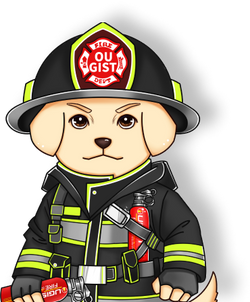Fire safety is a paramount concern in both residential and commercial settings. The ability to identify and address potential fire hazards is essential to prevent accidents and safeguard lives and property. In this blog, we will delve into the five key elements of fire safety, emphasizing the importance of a thorough fire risk assessment.
- Identifying Fire Hazards:
The first step in fire safety is recognizing potential fire hazards in your surroundings. This includes anything from faulty wiring and electrical appliances to flammable materials. Regular inspections of your home or workplace are crucial to identify and mitigate these hazards before they escalate.
Tips:
- Check for damaged wiring or overloaded power outlets.
- Store flammable substances in designated areas away from ignition sources.
- Inspect heating sources, such as furnaces or space heaters, for any malfunctions.
- Identifying People at Risk:
Once potential fire hazards are identified, it's essential to assess who might be at risk in the event of a fire. This involves considering the layout of the space, the number of occupants, and their mobility. Pay special attention to vulnerable individuals, such as the elderly or those with mobility challenges.
Tips:
- Identify escape routes for each area and ensure they are accessible.
- Consider the specific needs of different occupants, such as children or people with disabilities.
- Establish a communication plan to alert everyone in the event of a fire.
- Evaluate, Remove or Reduce the Risks:
After identifying fire hazards and assessing the people at risk, the next step is to evaluate and mitigate the risks. This may involve removing or reducing potential hazards and implementing safety measures to minimize the likelihood of a fire occurring.
Tips:
- Regularly service and maintain electrical appliances and systems.
- Install fire extinguishers in easily accessible locations.
- Implement fire-resistant materials in construction or renovation projects.
- Record Your Findings, Prepare an Emergency Plan, and Provide Training:
Documenting your fire risk assessment findings is crucial for accountability and future reference. Additionally, preparing an emergency plan and providing training ensures that everyone in the space knows what to do in case of a fire.
Tips:
- Keep detailed records of identified hazards and implemented safety measures.
- Develop and communicate an emergency evacuation plan.
- Conduct regular fire drills to ensure everyone is familiar with evacuation procedures.
- Review and Update the Fire Risk Assessment Regularly:
Fire safety is an ongoing process that requires regular review and updates. Changes in the environment, occupancy, or equipment may introduce new risks, making it essential to revisit and revise your fire risk assessment periodically.
Tips:
- Conduct regular inspections and updates, especially after renovations or changes in occupancy.
- Ensure that all fire safety equipment is in working order.
- Provide refresher training to occupants to reinforce fire safety protocols.


